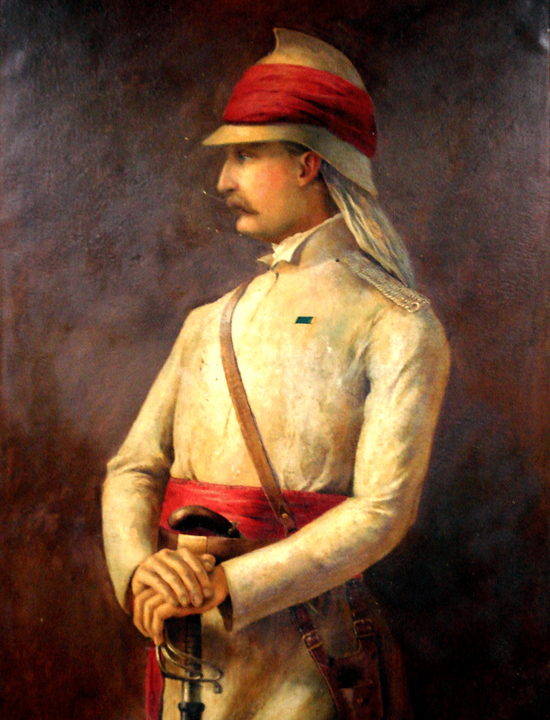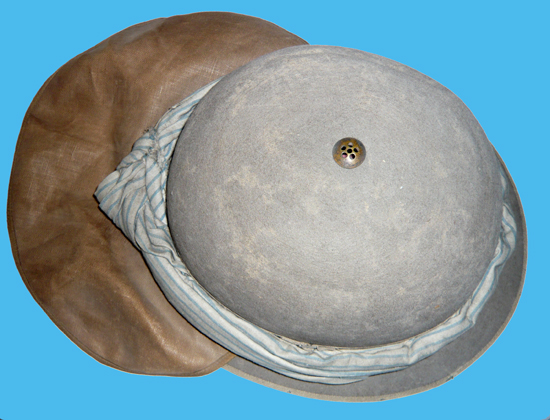 Figure 1. Top left, an Ellwood & Sons ‘Air Chamber’ military sun helmet, patented 1851, following traditional Indian designs it has a light weight cork construction, is cloth covered and has an ‘air pipe’ comb allowing air to freely circulate in the dome. Top right, a ‘Custodian’ police helmet by Christys & Co ltd (1952), uses almost identical construction methods; a version of this basic design was introduced in 1863 and was the only Custodian type for at least 10 years. Bottom left, a development of the sun helmet; a Christys & Co Ltd, late 1800s Colonial Pattern Sun Helmet. Bottom center, the attached Christys label. Bottom right, a near identically constructed police helmet, again by Christys, offered to the police as an alternative ‘Custodian’ style in the mid 1870s.
Figure 1. Top left, an Ellwood & Sons ‘Air Chamber’ military sun helmet, patented 1851, following traditional Indian designs it has a light weight cork construction, is cloth covered and has an ‘air pipe’ comb allowing air to freely circulate in the dome. Top right, a ‘Custodian’ police helmet by Christys & Co ltd (1952), uses almost identical construction methods; a version of this basic design was introduced in 1863 and was the only Custodian type for at least 10 years. Bottom left, a development of the sun helmet; a Christys & Co Ltd, late 1800s Colonial Pattern Sun Helmet. Bottom center, the attached Christys label. Bottom right, a near identically constructed police helmet, again by Christys, offered to the police as an alternative ‘Custodian’ style in the mid 1870s.
Tag Archives: air-chamber
Ellwood´s Alteration to their own Air Chamber Helmet Patent.
Stuart Bates’ article on “Ellwood’s Air Chamber Helmet” from July 5th 2012 describes Ellwood´s patent for a hat suitable for tropical regions. Whatever the shape – the idea is always executed in the same way. There are two shells that do not meet and form an “air chamber” – ventilated by holes or not – where the air is used as isolation against heat. Theoretically, a fine idea – but, as Stuart notes correctly: “There is no provision for the escape of heat, emanating from the wearer’s head, out of the inner shell which must have lessened the overall effectiveness of the design.” Ellwood´s must have had the same thought and here is an example of an Ellwood helmet where their own patent is altered. Continue reading
Ellwood’s Patent of 1851 for the Air-Chamber Helmet

William Stephen Raikes Hodson, founder of Hodson’s Horse, wearing a crested Ellwood’s helmet c1850s.
Ellwood and Sons were among the first, if not the first, English helmet manufacturers to supply the Indian trade and specialized in felt headgear for officers of the Honourable East India Company’s army and later the British Army in India. Their helmets were in use in India during the 1840s but with the advent of cork helmets, especially those of Hawkes & Co., declined in use from the late 1860s onwards. Continue reading

